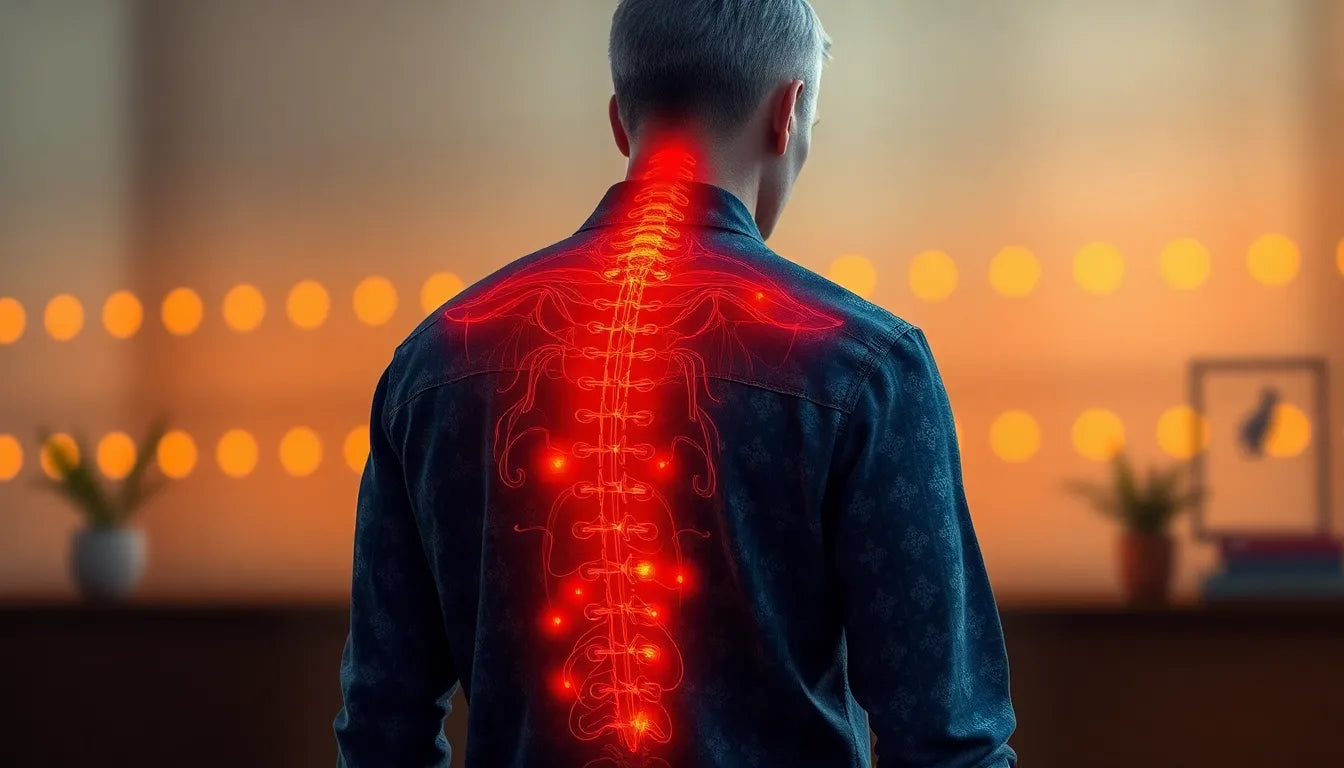Experiencing pain in the elbow when extending the arm is a common issue that many people face, often linked to conditions like tennis elbow or golfer's elbow. These conditions are primarily caused by repetitive activities that lead to overuse of the tendons surrounding the elbow. Whether you’re an athlete, a manual worker, or someone who engages in repetitive tasks, understanding the root of this discomfort is crucial for effective management and prevention.
Understanding elbow pain when extending the arm
Elbow pain can significantly impact daily life, making tasks such as lifting, gripping, or even extending the arm a challenge. Tennis elbow, or lateral epicondylitis, and golfer's elbow, or medial epicondylitis, are the most prevalent conditions associated with this type of pain. These conditions arise from repetitive wrist and forearm motions, which are common in sports like tennis or golf, as well as in professions that require manual labor or extensive use of tools.
The prevalence of elbow pain is notably high among individuals who frequently engage in activities that strain the elbow region. This includes not only athletes but also office workers, musicians, and anyone whose daily routine involves repetitive arm movements. Ignoring this pain can lead to chronic conditions, making early intervention and proper management essential to maintaining a healthy and active lifestyle.
The impact of elbow pain on daily life
Elbow pain can have a profound effect on your ability to perform everyday activities. Simple tasks such as opening a jar, typing on a computer, or even shaking hands can become painful and difficult. For athletes, this pain can hinder performance and lead to prolonged periods away from their sport. In the workplace, it can reduce productivity and increase the risk of further injury if left untreated.
Chronic elbow pain, if not addressed, can evolve into more severe health issues, affecting not just the elbow but potentially leading to compensatory injuries in other parts of the body, such as the shoulder or wrist. This is why it's crucial to understand the underlying causes and symptoms of elbow pain to implement effective treatment and prevention strategies.

Women's Posture Shirt™ - Black
Supports better posture and may help relieve pain and tension in daily activities.
Addressing elbow pain promptly can help prevent the progression to more severe conditions, ensuring that you maintain your quality of life and continue to perform daily activities without discomfort. In the following sections, we will delve deeper into the causes, symptoms, and effective treatment strategies for managing elbow pain, providing you with the knowledge you need to tackle this common issue head-on.
Causes of elbow pain when extending the arm
Elbow pain when you extend your arm is often attributed to overuse and repetitive motion, which are common culprits behind conditions like tennis elbow and golfer's elbow. These conditions arise when the tendons around the elbow are subjected to repeated stress, leading to inflammation and pain. Tennis elbow, or lateral epicondylitis, is caused by repetitive wrist and forearm motions, often seen in sports like tennis or activities involving manual labor. Similarly, golfer's elbow, or medial epicondylitis, is linked to activities that require repetitive wrist flexion and gripping, such as golfing or weightlifting.
Beyond these common causes, other factors can contribute to elbow pain. Bursitis, an inflammation of the bursa sac in the elbow, can cause significant discomfort, especially when the arm is extended. Ligament injuries, often resulting from trauma or overextension, can also lead to pain. Arthritis, including rheumatoid arthritis, can affect the elbow joint, causing chronic pain and stiffness. Additionally, muscle or tendon irritation from overuse can exacerbate elbow discomfort, making it essential to identify the specific cause to implement appropriate treatment strategies.
Recognizing symptoms of elbow pain
The symptoms of elbow pain when extending the arm can vary, but common signs include pain and tenderness in the elbow area. This pain is often most pronounced during or immediately after activities that involve arm extension. In cases of tennis elbow, tenderness is typically felt on the outside of the elbow, while golfer's elbow presents with tenderness on the inside. Morning stiffness and a feeling of weakness in the wrist or difficulty lifting objects are also indicative of these conditions.
In some cases, overuse of the biceps or triceps tendons can cause pain at the front or back of the elbow, depending on the activity patterns. It's crucial to pay attention to these symptoms, as they can provide valuable insights into the underlying cause of the pain and guide effective treatment and prevention strategies.
Effective treatment and prevention strategies
Addressing elbow pain effectively requires a combination of rest, rehabilitation, and supportive measures. Resting the elbow and avoiding activities that exacerbate the pain is crucial in the initial stages of treatment. Incorporating targeted exercises can help improve muscle strength and flexibility, aiding recovery and preventing future injuries. These exercises should focus on strengthening the forearm muscles and improving the range of motion in the elbow joint.
Supportive measures, such as using braces or ergonomic aids, can provide additional support to the elbow, reducing strain and promoting healing. These tools are particularly beneficial for individuals who cannot avoid repetitive activities due to their profession or lifestyle. For persistent or severe pain, consulting a healthcare professional is advisable. They may recommend medical treatments such as injections or, in rare cases, surgery to address the underlying issue.

Men's Posture Shirt™ - White
Supports posture and may help relieve tension and pain in everyday movement.
Preventing elbow pain involves adopting ergonomic practices and making lifestyle adjustments. Proper technique in sports and work-related tasks can significantly reduce the risk of developing conditions like tennis elbow or golfer's elbow. Regular stretching and strengthening exercises can help maintain elbow health, ensuring that the tendons and muscles are adequately prepared to handle stress. By taking proactive steps to prevent elbow pain, individuals can maintain their quality of life and continue engaging in their favorite activities without discomfort.
Long-term management and recovery from elbow pain
Managing elbow pain effectively requires a long-term approach, especially when dealing with conditions like tennis elbow or golfer's elbow. Recovery can take several months, particularly after severe overuse, as tendons need ample time to heal and regain strength. It is crucial to follow a structured rehabilitation program that includes gradual reintroduction of activities. This not only aids in recovery but also helps prevent re-injury.
Patience and consistency are key during the recovery phase. Engaging in regular, targeted exercises designed to improve flexibility and strength in the forearm and elbow can significantly aid in the healing process. Additionally, maintaining a balanced approach to activities and ensuring adequate rest can help manage symptoms and prevent future occurrences.
Preventive measures to avoid elbow pain
Prevention is often the best strategy when it comes to managing elbow pain. By adopting proper techniques in sports and work-related tasks, you can significantly reduce the risk of developing conditions like tennis elbow or golfer's elbow. Ergonomic adjustments in the workplace, such as using chairs with armrests or adjusting the height of your desk, can also help minimize stress on the elbow.
Regular stretching and strengthening exercises are vital components of a preventive routine. These exercises should focus on the muscles and tendons of the forearm and elbow, ensuring they are flexible and strong enough to handle repetitive movements. Incorporating these exercises into your daily routine can help maintain elbow health and reduce the likelihood of pain and injury.
Frequently Asked Questions
What is the difference between tennis elbow and golfer's elbow?
Tennis elbow, or lateral epicondylitis, is characterized by pain on the outside of the elbow, typically caused by repetitive wrist and forearm motions. Golfer's elbow, or medial epicondylitis, involves pain on the inside of the elbow, often resulting from repetitive wrist flexion and gripping activities.
How long does it take to recover from elbow pain?
Recovery time varies depending on the severity of the condition and adherence to treatment. Mild cases may improve within a few weeks, while more severe cases could take several months. Consistent treatment and rehabilitation are crucial for a full recovery.
When should I see a doctor for elbow pain?
If you experience persistent pain that does not improve with rest and home remedies, or if the pain is severe and affects your daily activities, it is advisable to seek medical attention. A healthcare professional can provide a proper diagnosis and recommend appropriate treatments.
Are there any effective home remedies for elbow pain?
Yes, several home remedies can help alleviate elbow pain. Applying ice to the affected area can reduce inflammation and pain. Over-the-counter pain relievers may also be beneficial. Resting the elbow and avoiding activities that exacerbate the pain are crucial for recovery.
Can ergonomic aids help with elbow pain?
Ergonomic aids, such as braces or supports, can provide significant relief by reducing strain on the elbow during activities. These aids can help maintain proper alignment and prevent further injury, making them a valuable component of both treatment and prevention strategies.
Kilder
- Klinik Westend. ”Ondt i albuen.” Klinik Westend.
- Gigtforeningen. ”Albue.” Gigtforeningen.
- Bandageshoppen. ”Hvad er tennisalbue & golfalbue?” Bandageshoppen Blog.
- Din Flexible Sundhed. ”Overbelastningsskade i albuen.” Din Flexible Sundhed.
- Kiropraktoren. ”Smerter i albuen ydersiden.” Kiropraktoren.
- Sundhed RM. ”Overlægen forklarer: Derfor gør det ondt i albuen.” Sundhed RM.
- Sundhed.dk. ”Albuesmerter.” Patienthåndbogen.


















